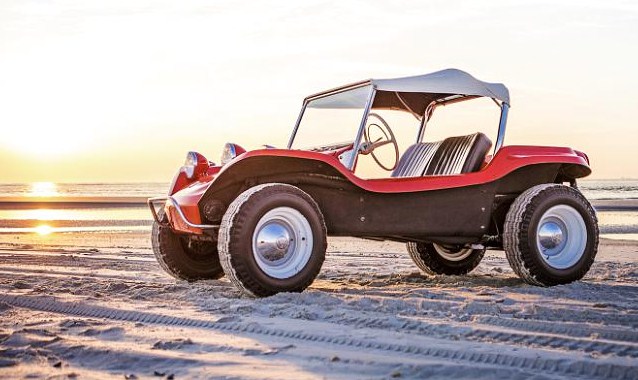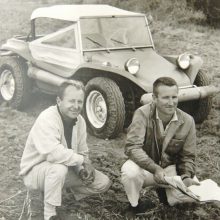
A 50th anniversary party for the original dune buggy, the 1964 Meyers Manx, highlights the Historic Vehicle Association’s inaugural Cars at the Capitol automotive heritage celebration this weekend at the National Mall in Washington, D.C.
The first Manx, known as “Old Red,” was hand-built by Bruce Meyers in his Newport Beach, California, garage and will be present Saturday morning during the opening remarks at the National Mall. Meyers, an active 88 year old, also is expected to attend.
The first-time event for the HVA, held in partnership with Volkswagen Group of America, is designed to raise the profile of historic American vehicles and the public’s awareness of preserving the nation’s motoring heritage.

Part of the honors are plans for the 1964 Meyers Manx to be the second automobile recorded under the U.S. Secretary of Interior’s Standards for Heritage Documentation. The documentation will be part of the HVA’s National Historic Vehicle Register and Historic American Engineering Record that is permanently archived in the Library of Congress. The first vehicle so registered was the 1964 Shelby Cobra Daytona Coupe race car.
“Having Old Red recognized as the second vehicle to achieve national heritage status is a great honor and fitting 50th anniversary present,” Meyers said in an HVA news release.
The uniquely American story centers on how Meyers invented the Manx dune buggy in his small garage when he hand-laid fiberglass to form the now-iconic body shape that was built onto the shortened chassis and air-cooled engine of a Volkswagen beetle. He first drove the car in May 1964.
The Manx quickly became known as the most fun on four wheels, a perky roadster with West Coast attitude that could be driven like a sports car on the beach. The dune buggy became emblematic of the 1960s California lifestyle, and there were soon dozens of copycats going for the same look and performance. And, like Bruce Meyers, a handy hobbyist could build one in his own garage using a body kit.
“Dune buggies have a message: fun,” Meyers said. “They’re playful to drive and should look like it. Nothing did that at the time.”

Meyers was a beach-loving artist and boat builder in 1964 when he set out to create his vision of a dune buggy. The Manx also was found to be a fierce competitor in off-road racing. Indeed, Meyers is credited with being instrumental in the beginning of organized off-road racing when he and his driving partner, Tom Mangels, set the first trans-Baja four-wheel record by beating the motorcycle times in Old Red in 1967.
Old Red’s victory sparked the inaugural National Off Road Racing Association’s Mexican 1000 later that year. Mangels and Vic Wilson won that race in a Meyers Manx. Many of today’s exotic off-road racers trace their lineage to the Meyers Manx.
Later this month, Bruce Meyers again will enter the Baja 1000 along with several off-road race veterans celebrating the Manx’s 50th year.
In nominating the 1964 Meyers Manx for inclusion in the Library of Congress archive, the HVA said in a news release, “This one’s pretty much a no-brainer. While there may have been comparable dune buggies without Bruce Meyers, the man behind the Manx, one thing is for sure: they wouldn’t have been nearly as much fun.
“Meyers’ West Coast upbringing and general outlook on life can be found in all aspects of the Manx, making it one of the most enjoyable cars out there to drive, not to mention simply look at. A pioneer in vehicle design and replication, Meyers made a real impact on the automotive industry in the second half of the twentieth century.”
T he HVA plans to exhibit 10 other automobiles, one per decade from the 1890s to the 1980s, that are eligible and beginning the process to be documented for the HAER archive. The exhibited vehicles include a1895 Benton Harbor, 1909 Washington Model A-1, 1919 Pierce-Arrow Model 51 Presidential Limousine, 1926 Duesenberg Model A, 1933 Graham 8 Sedan “Blue Streak,” 1947 Tucker ’48 “Tin Goose,” 1952 Hudson Hornet Club Coupe, 1964 Studebaker Avanti, 1976 CitiCar and 1981 De Lorean DMC-12.
For more information on the HVA’s Cars at the Capitol, see www.carsatthecapital.org.




